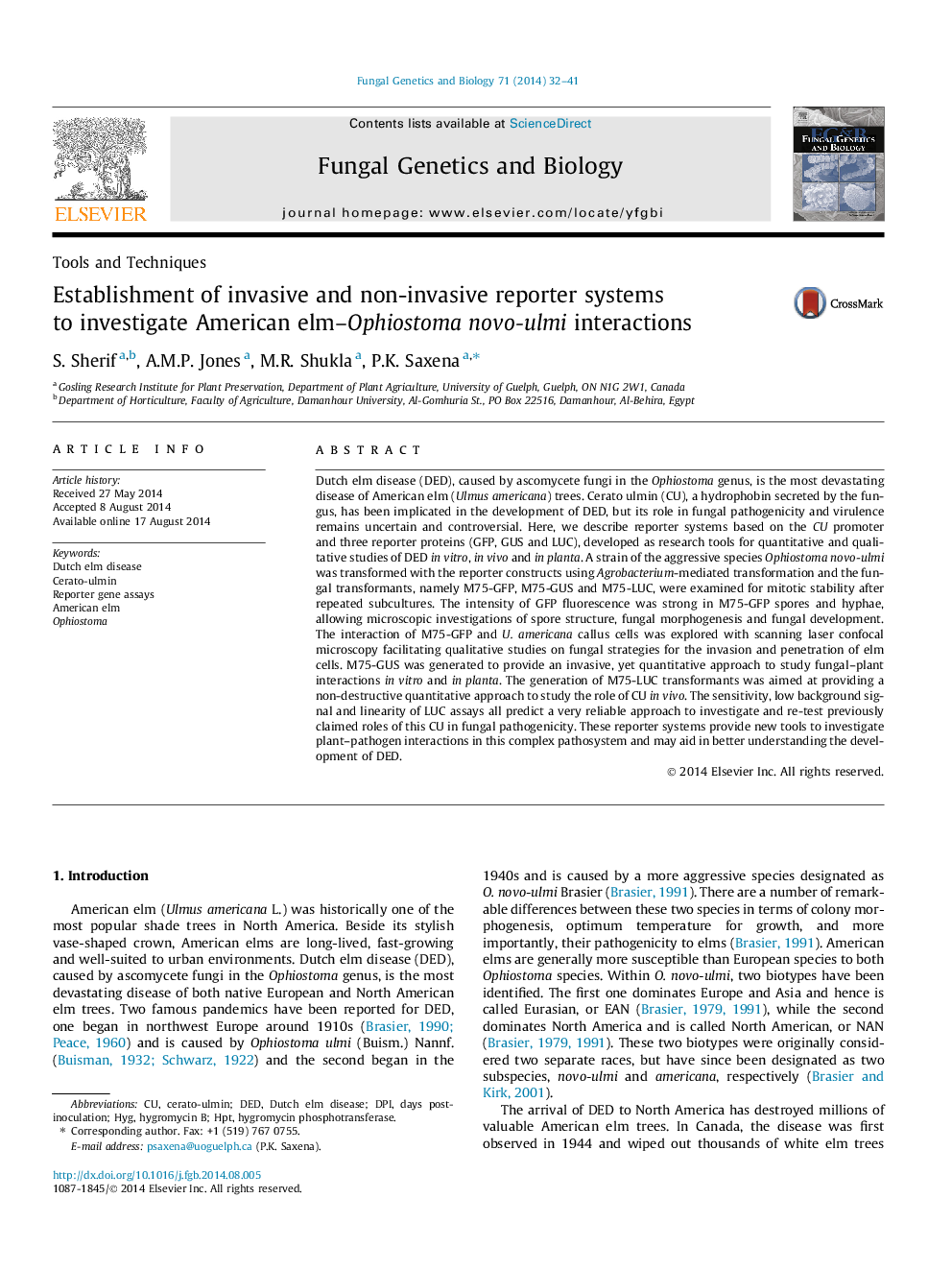| Article ID | Journal | Published Year | Pages | File Type |
|---|---|---|---|---|
| 2180726 | Fungal Genetics and Biology | 2014 | 10 Pages |
•Reporter systems were established to facilitate experimental investigations into Dutch elm disease.•A strain of the aggressive species Ophiostoma novo-ulmi was transformed by Agrobacterium.•Fungal transformants expressing GFP, GUS and LUC were produced and examined for mitotic stability.•In vitro, in vivo and in planta investigations can be performed using these fungal transformants.
Dutch elm disease (DED), caused by ascomycete fungi in the Ophiostoma genus, is the most devastating disease of American elm (Ulmus americana) trees. Cerato ulmin (CU), a hydrophobin secreted by the fungus, has been implicated in the development of DED, but its role in fungal pathogenicity and virulence remains uncertain and controversial. Here, we describe reporter systems based on the CU promoter and three reporter proteins (GFP, GUS and LUC), developed as research tools for quantitative and qualitative studies of DED in vitro, in vivo and in planta. A strain of the aggressive species Ophiostoma novo-ulmi was transformed with the reporter constructs using Agrobacterium-mediated transformation and the fungal transformants, namely M75-GFP, M75-GUS and M75-LUC, were examined for mitotic stability after repeated subcultures. The intensity of GFP fluorescence was strong in M75-GFP spores and hyphae, allowing microscopic investigations of spore structure, fungal morphogenesis and fungal development. The interaction of M75-GFP and U. americana callus cells was explored with scanning laser confocal microscopy facilitating qualitative studies on fungal strategies for the invasion and penetration of elm cells. M75-GUS was generated to provide an invasive, yet quantitative approach to study fungal–plant interactions in vitro and in planta. The generation of M75-LUC transformants was aimed at providing a non-destructive quantitative approach to study the role of CU in vivo. The sensitivity, low background signal and linearity of LUC assays all predict a very reliable approach to investigate and re-test previously claimed roles of this CU in fungal pathogenicity. These reporter systems provide new tools to investigate plant–pathogen interactions in this complex pathosystem and may aid in better understanding the development of DED.
